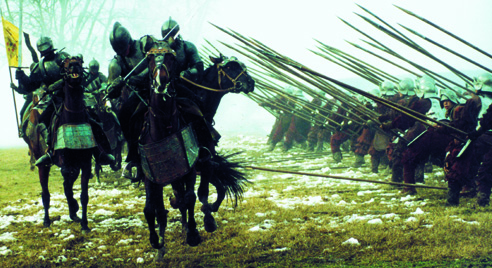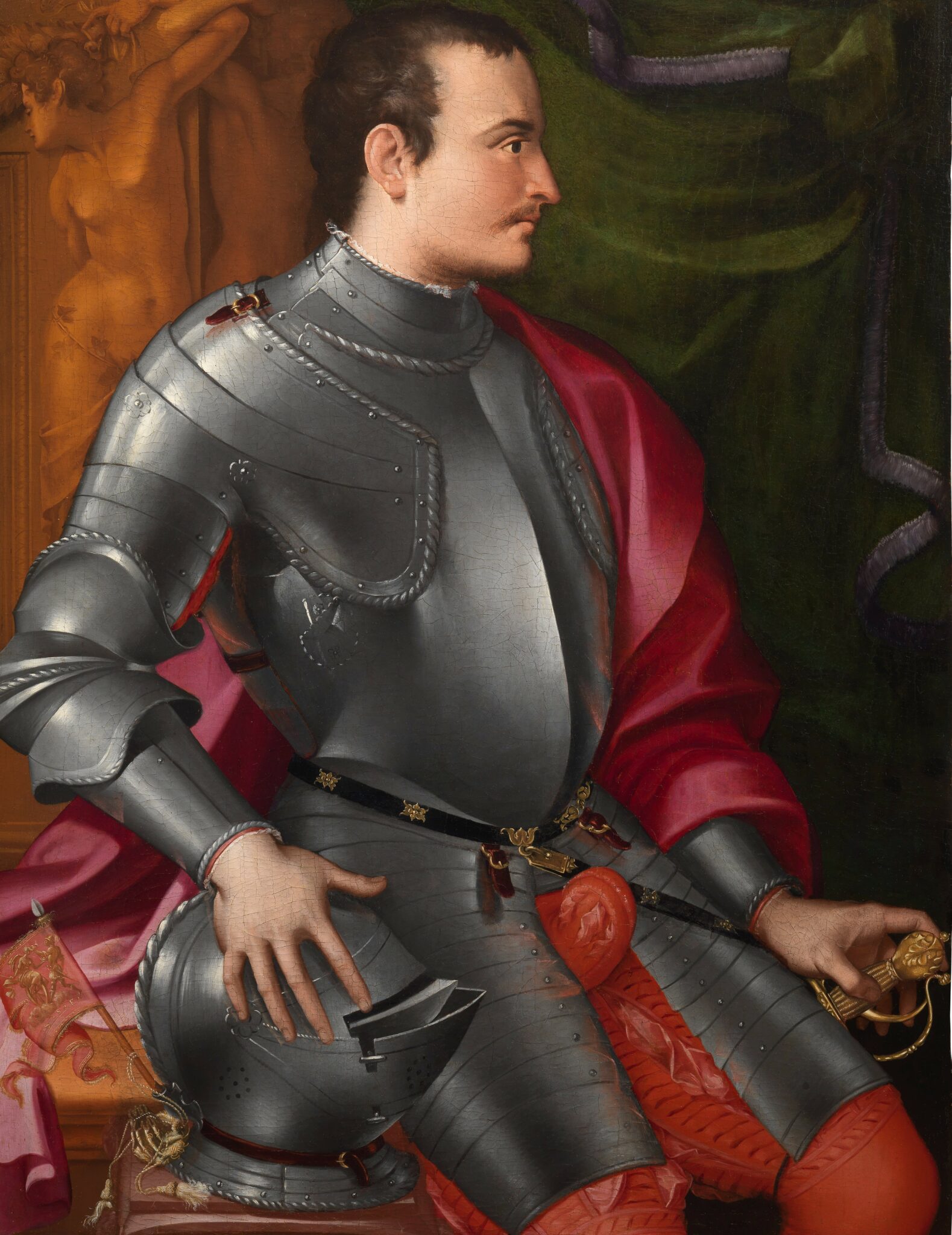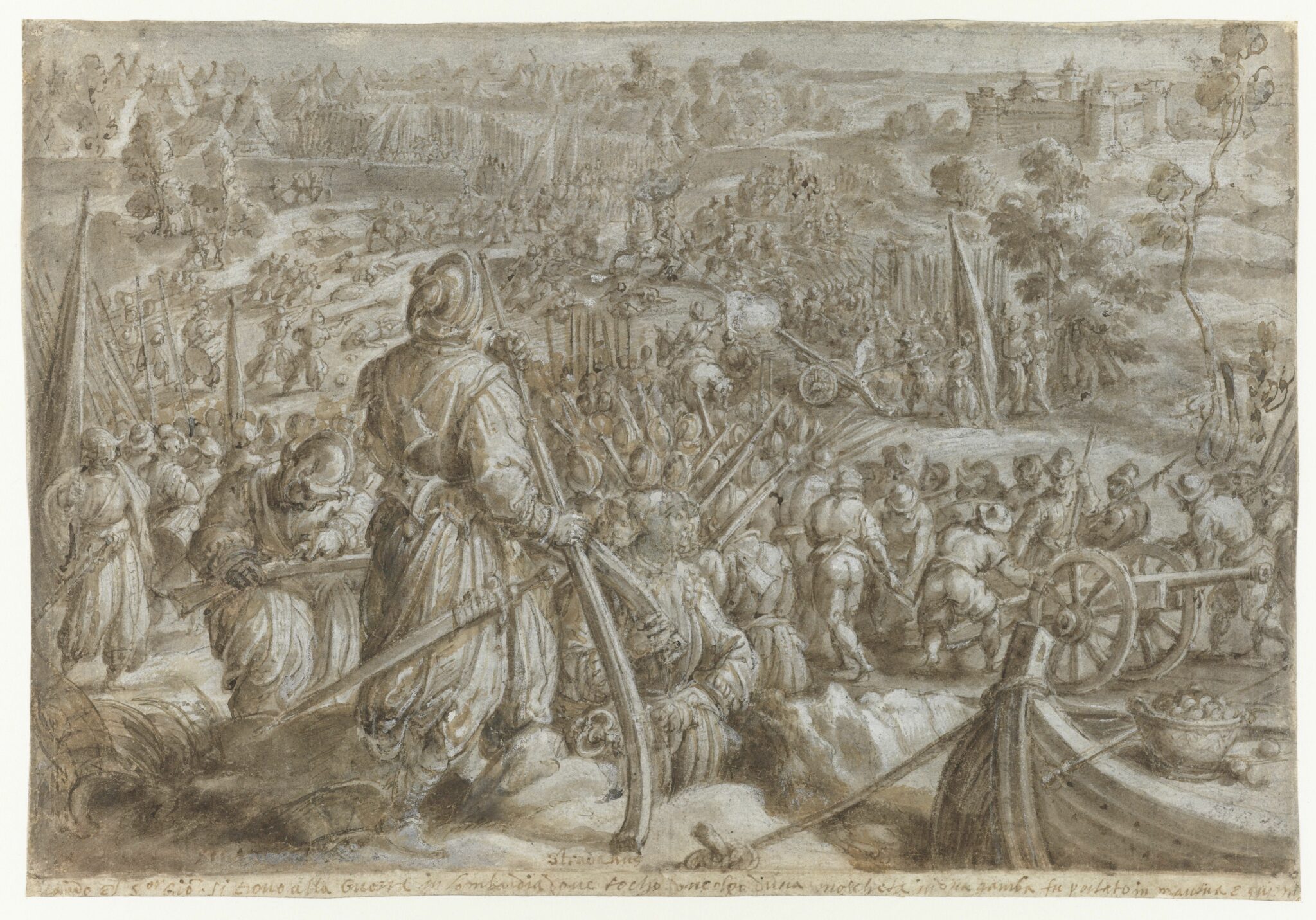In some of my previous articles I have described the exploits of some Umbrian leaders such as Gattamelata, Vitellozzo Vitelli, Bartolino da Terni known as Naso di Patata and many others. Today we are rediscovering Cuppano delle Bande Nere, just to underline, as if there was still a need, how imbued our Region was with a fiery and combative spirit in its noblest sense.
While some leaders carried out their activities in the medieval period, Lucantonio Coppi from Montefalco, known as Cuppano, was a Renaissance commander. We are at the beginning of the Renaissance, a cultural, artistic and historical container period that, conventionally, embraces the years between 1493 and the early 1600s. This era is of considerable significance because it marks a fundamental transition from the Middle Ages to the modern era. It is a complex movement of renewal and rebirth that characterized many aspects of Italian and European society. In Italy, the cradle of the Renaissance is Florence, thanks also to two prominent figures such as Cosimo de’ Medici and Lorenzo the Magnificent.
A period characterized by great creativity and very strong cultural innovation, its protagonists include Michelangelo Buonarroti, Tiziano Vecellio, Nicol√≤ Machiavelli, Francesco Guicciardini, Galileo Galilei and many others. No, I haven’t forgotten about Him, the Universal Genius Leonardo da Vinci, born in the Middle Ages (1452) and died in the Renaissance (1519). With his drawing, the Vitruvian Man, Leonardo, provides the unit of measurement on which to base the representation of the world, becoming a symbol of the Renaissance.

The Renaissance in Umbria
The Umbrian Renaissance emerged clearly and distinctly through the so-called Bottega of 1473. This was none other than that group of artists, where the young Perugino and Pinturicchio stood out among others, authors of the eight panels of the Stories of San Bernardino, considered an unmistakably Renaissance work.
We certainly cannot forget the other most illustrious exponents of the Umbrian Renaissance such as Luca Signorelli, Benozzo Gozzoli and Nicolò Alunno. Those who want to begin a journey into Umbrian Renaissance art can start from the Cathedral of Spoleto which, despite its Romanesque structure, presents important Renaissance-era modifications in the portico.
The Black Bands
Before telling you about the exploits of Lucantonio Coppi, it is worth briefly dwelling on the so-called Black Bands, of which the leader from Montefalco was a member.

The Bande Nere were a mercenary company commanded by Ludovico di Giovanni de’ Medici, a great leader of the 16th century, who later went down in history also with the name of Giovanni dalle Bande Nere precisely because after the death of his uncle, Pope Leo X, he changed the color of their flags from white and purple to black as a sign of mourning. The Bande Nere were one of the best mercenary companies in Europe, as Giovanni had the reputation of being a severe and rigorous commander, who demanded iron discipline from his soldiers. They were composed almost entirely of Italians and were armed mainly with arquebuses, those typical portable muzzle-loading firearms. They specialized in tactics similar to guerrilla warfare.
The fame of the Bande Nere spread rapidly and the best infantrymen enlisted in it, but also failed scholars, penniless cadets, adventurers, desperate people, farmers, deserters and traitors. In the summer of 1528, the Bande Nere were definitively disbanded, after the siege of Melfi, due to the numerous losses they had suffered in battle and due to a plague.
Commander Lucantonio Coppi known as Cuppano
The last leader of the Bande Nere was Lucantonio Coppi and I would like to start with his curriculum vitae and then go into some details and curiosities.
Name and Surname: Lucantonio Coppi
Nickname: Cuppano
Birth: Montefalco, March 1507
Death: January 1557
Armed Forces: Mercenaries
Unit: Cavalry
Rank: Captain of fortune
Commander of: Bande Nere (since 1526)
Other positions: Governor of Piombino
Country served: Holy Roman Empire, Papal States, Duchy of Urbino, Republic of Venice, Florentine Republic.
Why did he have the nickname Cuppano? It is said that everything was decided by the Public Council of Montefalco which, having divided the people into four districts, named the families that were called De Cuppis based on the district they belonged to, distinguishing them into De Cuppis (original name), Coppe Vecchie, Coppe Nuove, Coppis, Cuppis and Cuppani.
Lucantonio frequented the Medici family from a very young age, whose members introduced him to the profession of arms. And it was in Florence that he met Giovanni de’ Medici who welcomed him into the Bande Nere, becoming his most faithful companion. In 1526 Cuppano witnessed, during the battle of Governolo, the wounding of Giovanni de’ Medici who, in serious conditions, was transported to Mantua, about twenty kilometers away. Here his leg was amputated and when, already seriously injured by the wound now in gangrene, he was preparing to cross the threshold of death, he appointed, also on the advice of his friend and poet Pietro Aretino, Cuppano to the command of the Bande Nere.
Cuppano was just nineteen years old when he took command of this mercenary company and despite the small number of members he was characterized by his combative qualities. Shortly after the Black Bands disbanded, but Cuppano from Montefalco continued his career as a leader until his death in 1557, becoming in the meantime also Governor of Piombino.

Some curiosities
The close bond between Cuppano and the Medici family is also confirmed by an episode that is not a given for a mercenary leader; the transcription, in 1525, of the famous recipe book of Caterina Sforza, mother of Giovanni de’ Medici, containing recipes for cosmetics, botany, medicine and chemistry, under the title: Experimenti de la Exellentissima Signora Caterina madre de lo Illuxtrissimo Signor Giovanni de’ medici.
Caterina’s recipes were written in Latin, in the vernacular and in cipher. The most famous recipe is undoubtedly Acqua Celeste which, as she herself stated: ¬´it has such virtue that it makes old people young and if he were 85 years old it will make him look 35 years old, and make him alive from death¬ª.
Before taking up the post of Governor of Piombino, after the death of Otto da Montauto, he was advised, in a letter dated 1552 written by Cosimo I de’ Medici, to stay a few days in Scarlino, on the Maremma hills, where the air is better, as Cuppano had expressed doubts about the Elban climate at the beginning of autumn. Anticipating what would be the role of contemporary chroniclers, Cuppano wanted his friend and doctor from Piombino Marcello Squarcialupi to write down in detail the guerrilla events from 1552 to 1556. The leader Cuppano was remembered in 2001 as one of the characters in Ermanno Olmi’s film Il mestiere delle armi. On 5 January 1557 Lucantonio passed away, but the news did not come unexpectedly. Duke Cosimo had sent him his personal doctor and special medicines with affectionate words of a speedy recovery as if to underline how much Giovanni delle Bande Nere’s favourite friend still was in the feelings of the Medici family.
Domenico Arcangeli
Latest posts by Domenico Arcangeli (see all)
- Castelbuono, Brufa and the Yorkshire Sculpture Park - July 3, 2025
- Caterina Franceschi Ferrucci: «Let me study or nothing will happen!» - May 13, 2025
- Cuppano from Montefalco, leader of the Black Bands - January 10, 2025

